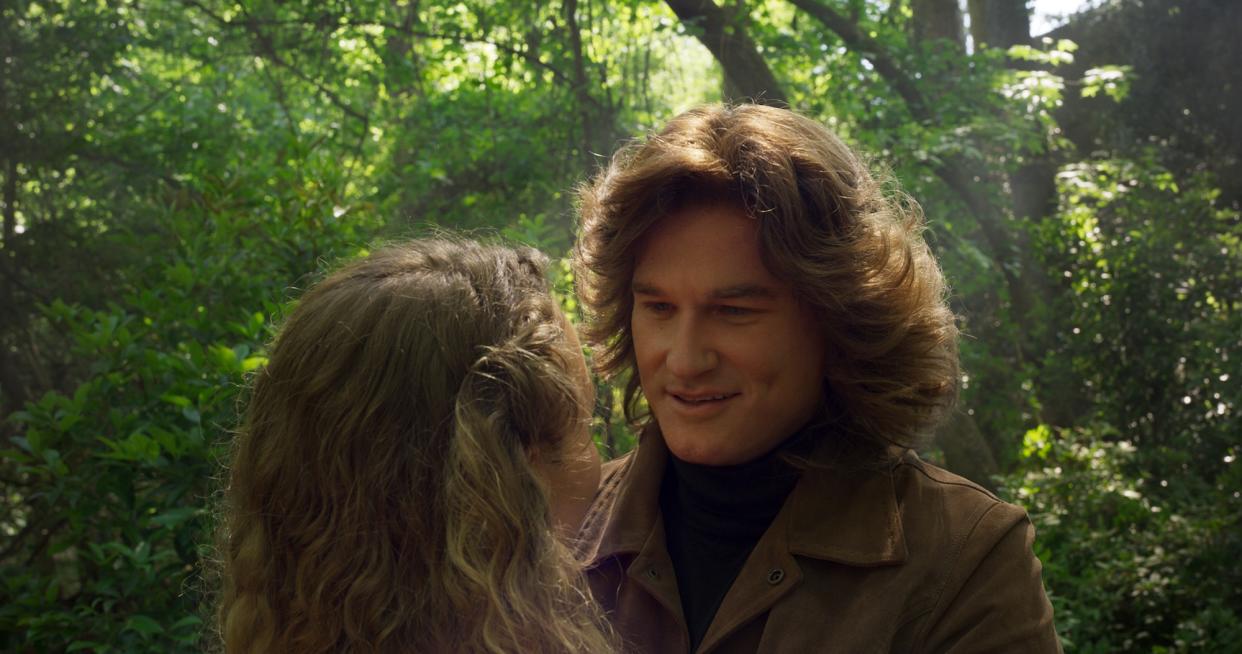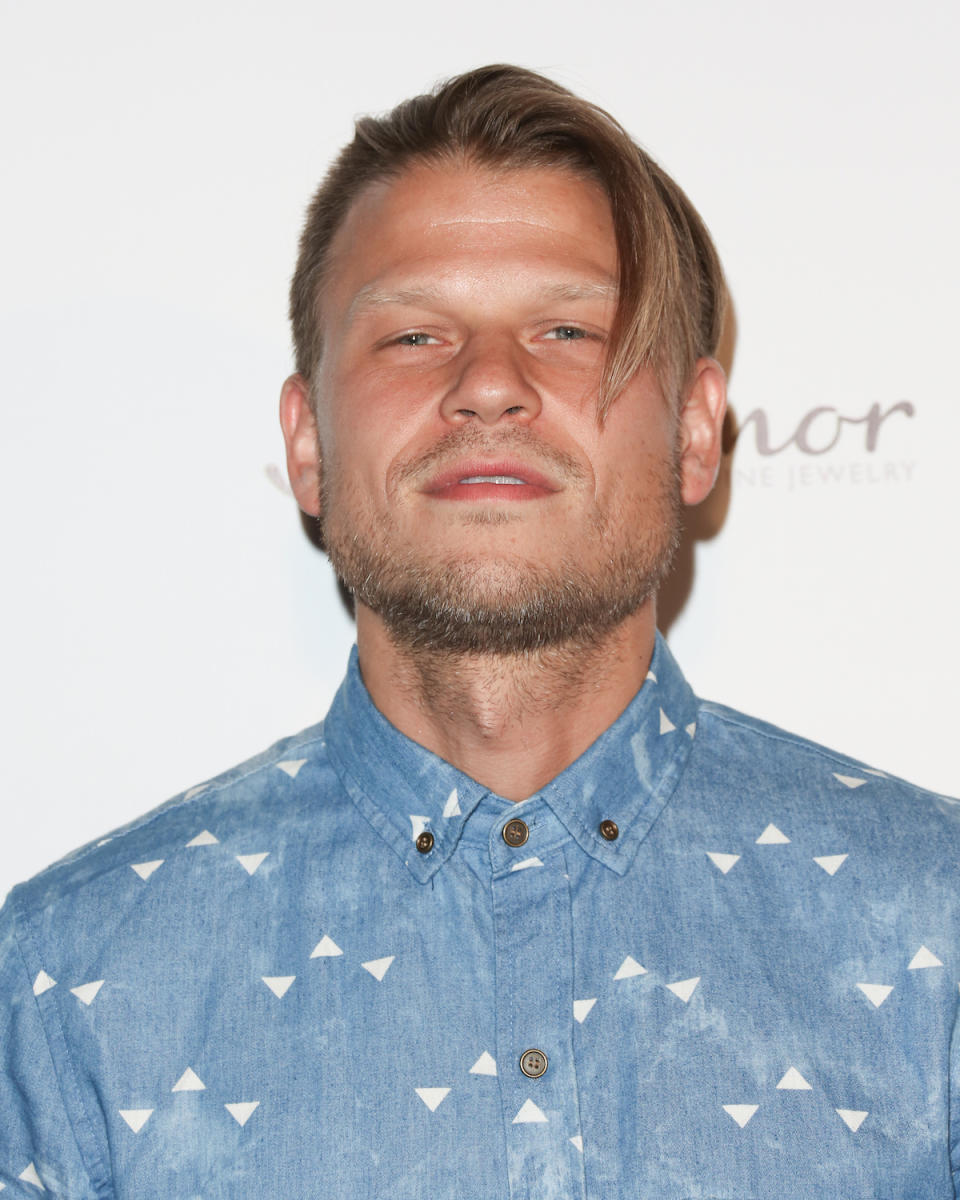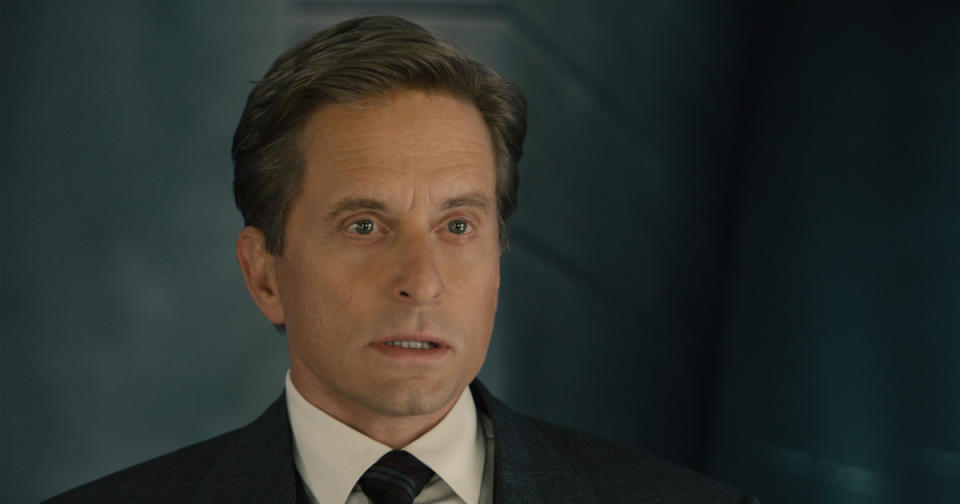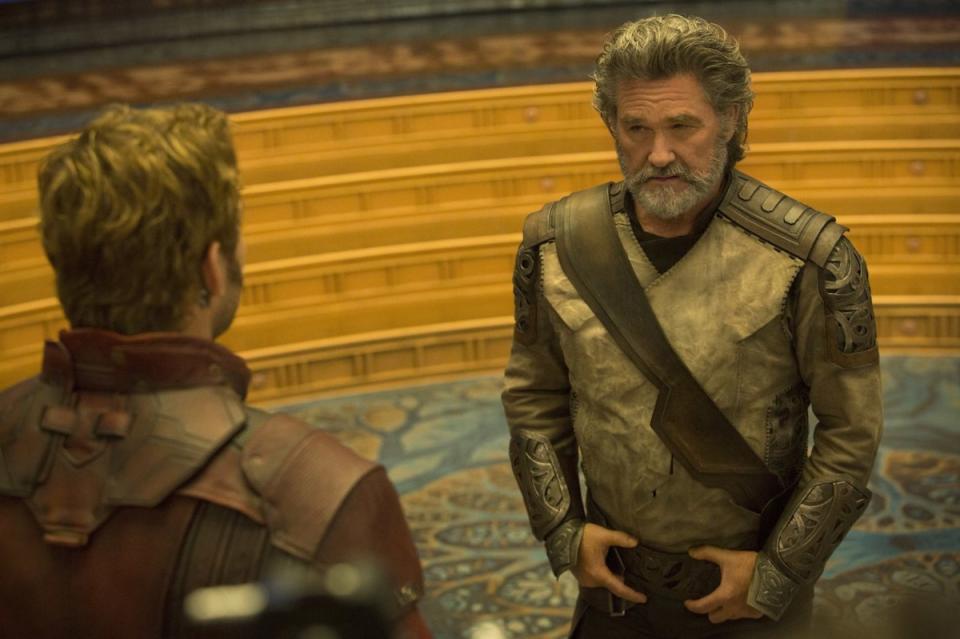'Guardians of the Galaxy Vol. 2' VFX spotlight: De-aging Kurt Russell gracefully

How did 66-year-old Kurt Russell become his 36-year-old self in the ’80s flashback sequence that opens Guardians of the Galaxy, Vol. 2? Credit great genes, a great makeup team, and a Marvel-ous visual effects crew overseen by Chris Townsend. The veteran visual effects supervisor of four Marvel movies and counting (he’s worked on Captain America: The First Avenger, Iron Man 3, Avengers: Age of Ultron, and is now deep in pre-production on 2019’s Captain Marvel), Guardians allowed Townsend to add to a tradition that started in earnest with Ant-Man: transforming older actors into their younger selves. So far, Michael Douglas, Robert Downey Jr., and Russell have experienced the de-aging process, and one assumes that list will expand along with the ever-growing Marvel Cinematic Universe.
Speaking with Yahoo Movies in advance of Vol. 2‘s digital release tomorrow (August 8) and Blu-ray premiere on August 22, Townsend revealed some of the secrets behind Marvel’s digital “fountain of youth” and whether we’ll ever see an entire movie starring the younger versions of older heroes.
In interviews prior to the film’s release, Kurt Russell suggested that his “de-aging” for the opening flashback sequence was the result of makeup rather than a lot of digital enhancements. What can you tell us about the tricks behind his appearance?
I wouldn’t say he used mostly makeup; it was mostly makeup, plus about three months, per shot, of several artists working on each shot! What we did is, we went to Kurt and his makeup gang and said, “Look we want him to look as young as possible.” And they did a terrific job making him look young, and putting a great wig on him. But then we put dots on his face for witness cameras, and we cast another guy for the young Kurt Russell, named Aaron Schwartz. He was a reference not only of what 30-year-old skin looks like in that particular environment, but also someone we could potentially use to skin-graft bits onto Kurt’s performance once we’ve done whatever he could by de-aging him and thinning him out.

So it was a real process of photographing Kurt in the initial performance, and then bringing in Aaron who played the picture double for the young Kurt. We would ask him to go through exactly the same moves with the same performance and we would shoot it in as similar a way as we could, so that we’d have it as a guide. We then take that to the visual effects company, Lola, which has been the go-to company for this sort of de-aging for many years. It’s literally doing digital plastic surgery: getting a nip and a tuck, and reducing the size of the pores and smoothing out the wrinkles and tightening up the skin. And where you can’t take the original photography and manipulate it, you then have to go back to the picture double and literally skin-graft parts of his face onto the main actor. So the make-up that was done on set was great, but it got you 20 percent of the way there, and then we had to do an awful lot of work digitally to make it a final image.

So Aaron was physically on set performing with the other actors for those scenes?
Yes, he would act with Laura Haddock [who plays Star-Lord’s doomed mother Meredith Quill] as Ego. But he would first watch what Kurt did and repeat the exact same performance. It’s obviously Kurt’s performance that you see onscreen; it’s just the little bits and pieces around the neck or the ears or wherever it may be that you can’t just take the skin and make it look like it should have 30 years ago. The thing about it is that it’s a laborious process. It is many artists, sitting for many hours, for many days and weeks and months crafting this. The artists at Lola, particularly, understand the physiology of the aging process. There’s a terrific artistry that goes on there.
How has the process changed since Marvel started doing these de-aging flashbacks with Michael Douglas in Ant-Man?
To be honest, we’re still kind of doing it the same way. I first used it on skinny Steve from the first Captain America movie, and it was the same idea that we did back then of slimming, shaping, skinny-ing, and smoothing out the skin. It wasn’t de-aging on that film, but it was certainly the same technique. Whenever you go into a film, you always start by asking, “Is there a better way?” And the answer, at the moment, is no — there’s not really a better way. But everyone’s getting better at it and hopefully if you look at the films over the course of what’s been done, the latest film is the best version of it. That’s our intent. I personally loved what they did with Kurt; they’ve effectively captured his persona.
Is there an entire industry of actors like Aaron Schwartz now who can act as references as the younger selves of other actors? The most recent Pirates of the Caribbean film similarly used a young actor to de-age Johnny Depp for a flashback sequence.
No, Aaron is a traditional actor. [Ed. Note: Schwartz started in the business as a child actor with roles in The Mighty Ducks and Heavyweights. He’s also had roles on Gossip Girl and Elementary.] This isn’t what he does, and he’s never worked with Kurt before. What you really want is an actor who knows how to act if they need to be able to perform, but also someone who has an ability to mimic what’s being done. Back on Captain America: The First Avenger, we were doing it with an actor in England who was a theater actor and also a musician. So he had a great sense of timing and could watch the performance Chris Evans was doing and replicate the beats and timing. So there are certain skills, but ultimately you want someone that can perform, emote, and imitate the actor you’re trying to replicate, and also has some of the facial features that are useful. That’s a key thing, because otherwise it’s not usable.

Are we at the point yet where Marvel could do more than just a flashback with a de-aged actor? Or is it still prohibitive in terms of cost?
I think we are at that point. You ultimately want to be able to do whatever the filmmakers require. The point of visual effects is they’re there to provide the visuals, and if the narrative in the film requires that you have a whole film of a younger character, then we have to figure out a way to do that economically enough to make it viable. The techniques are there, but it’s not necessarily a very scalable approach. It’s not like “Oh, we’ll just put more computers on it.” It literally is just artists sitting at a desk and doing it. So if you have something that is 10 times longer, it’s going to take 10 times longer and it’s going to take 10 times more people. What you will get is more familiarity with who that person is and what they look like, so the more you do it, the quicker you get to that final look. So maybe there will be more efficiencies.
What was the process of swapping David Hasselhoff’s head onto Kurt Russell’s body? That’s a great gag in the film.
Weta Digital actually did those shots and what you’re seeing there is a full digital re-creation of both David Hasselhoff and Kurt Russell. So you’re able to transition between the two and have one body do this crazy liquid simulation formation from one character to another. We knew it was going to be something that people would love in the theater, so it was really fun to be able to work on such a great moment of the film. And creating that transition was challenging. There wasn’t enough screen time to keep it going too long; you want it to be a “Wow, bam” joke and then out of it again. It needed to have the right beat and timing the transition so it didn’t look too fake, but also have a slightly stylized feel to it so it didn’t look gruesome.

I loved the look of Ego’s world in the film — it felt like the cover of a ’60s or ’70s pulp sci-fi novel brought to life. What sort of cues did you take for the visual effects in those scenes?
That was the idea. We looked at a lot of album art, sci-fi book covers, and comic books from the ’60s, ’70s, and ’80s. We studied the palettes, shapes, and forms, so that was a lot of the inspiration for what we did. Absolutely, that was lot of inspiration for what we did. Ego’s world was particularly challenging, just as an environment, because we had to create something that was unique and very stylized. We didn’t want it to appear like something you could have gone out and shot and then just added a second moon to or a different colored sky. Also, the last third of the movie takes place in this fully digital environment underground, and we did research on the way the planet itself moves. We ended up with a tectonic plate sort of feel as things were crumbling and moving whilst other things were growing. We looked at time-lapse photography of stalactites and stalagmites and icicles forming over time. We used that as natural references for what we were doing [digitally] and tried to fold it into this super-stylized world.
Watch a supercut of every Best Visual Effects Oscar winner:
Read more from Yahoo Movies:


